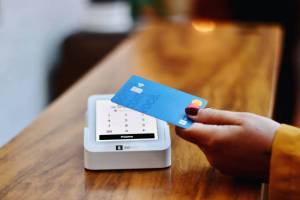Are you ready to make your app the next big thing? Dive into the world of app marketing with us. In this essential guide, we unveil the secrets of successful app promotion. Discover tips and strategies that will skyrocket your app’s visibility and user base. Whether you’re launching a new app or boosting an existing one, mastering app marketing is crucial. Stay tuned to unlock the full potential of your app in the competitive digital marketplace.
What is App Marketing?
App marketing is a vital process. It involves promoting and selling mobile applications to potential users. It’s not just about making an app available on app stores. It’s about creating a strategy to attract, engage, and retain users.
App marketing covers a range of activities. These include app store optimization (ASO), advertising, social media promotion, and more. The goal is to stand out in a crowded market. It’s about making your app visible to the right audience. Effective app marketing turns your app from an unknown entity into a must-have for your target users.
In the next sections, we’ll explore how to achieve this.
Why is App Marketing Important?
App marketing is crucial in today’s digital world. Here are key reasons why:
- Visibility in a Crowded Market: There are millions of apps on app stores. App marketing helps your app stand out. Without it, even the best apps might remain unnoticed.
- Reaches the Right Audience: Effective app marketing targets your specific audience. It ensures your app reaches people who are most likely to use and benefit from it.
- Boosts User Downloads: Good marketing strategies increase your app’s downloads. More downloads mean more users and potentially more revenue.
- Creates User Engagement: Marketing keeps users engaged with your app. This leads to higher retention rates. Engaged users are more likely to recommend your app to others.
- Builds Brand Awareness: App marketing also builds your brand. A well-marketed app can increase awareness and credibility for your business.
- Facilitates Feedback and Improvement: Marketing your app brings valuable user feedback. This feedback is essential for continuous improvement and user satisfaction.
In essence, app marketing is not just a nice-to-have, but a must-have. It’s the bridge that connects your app to its potential users and success.
The App Marketing Funnel
The App Marketing Funnel is a model that outlines the journey of an app user. It starts from the initial discovery to the final stage of loyal usage. Understanding this funnel is key to effective app marketing. Here’s a breakdown of its stages:
- Awareness: This is the top of the funnel. Potential users first learn about your app. Methods like social media marketing, ads, and app store optimization (ASO) play a vital role here.
- Interest: Once aware, users show interest. They seek more information about your app. Here, your website, app store listing, and reviews are crucial.
- Consideration: In this stage, users consider downloading your app. They compare it with others. Engaging descriptions, screenshots, and demo videos are important.
- Conversion: This stage is where users download your app. A seamless download process and a compelling call-to-action (CTA) are key.
- Retention: Post-download, it’s about keeping users engaged. Regular updates, push notifications, and in-app incentives help in this stage.
- Loyalty: The final stage is turning users into loyal fans. Excellent user experience and customer support are essential here. Loyal users may recommend your app to others.
Understanding and optimizing each stage of the App Marketing Funnel is crucial. It helps in attracting and retaining more users, ultimately leading to the success of your app.
Mobile App Acquisition Strategies

Acquiring users for your app is a crucial part of app marketing. Here are effective strategies to attract new users:
- App Store Optimization (ASO): Optimize your app’s listing for the app stores. Use relevant keywords, compelling descriptions, and eye-catching icons. This helps improve visibility and ranking in app store searches.
- Social Media Marketing: Utilize social media platforms to reach potential users. Create engaging content that highlights your app’s features. Use targeted ads to reach specific audiences.
- Influencer Partnerships: Collaborate with influencers who align with your app’s target audience. They can promote your app to their followers, creating trust and interest.
- Content Marketing: Publish valuable content related to your app. Use blogs, videos, and infographics to attract and educate your audience.
- Email Marketing: Send targeted emails to potential users. Highlight key features and benefits of your app. Include a clear call-to-action to download the app.
- Paid Advertising: Invest in paid ads on various platforms. This can include Google Ads, Facebook Ads, and other ad networks. Target your ads to reach the right audience.
- Referral Programs: Encourage existing users to refer your app to others. Offer incentives for both the referrer and the new user.
- Partnerships and Collaborations: Partner with other businesses or apps. This can help you tap into a new user base.
Each of these strategies can be effective in acquiring new users for your app. The key is to understand your audience and tailor your approach accordingly. Combining multiple strategies often yields the best results in app acquisition.
User Activation Strategies

Once you’ve acquired users, the next step is activation. This means encouraging users to start using your app actively. Here are strategies to boost user activation:
- Onboarding Process: Create a seamless and informative onboarding experience. Show users how to use the app and highlight key features. A good onboarding experience can significantly increase user engagement.
- Push Notifications: Use push notifications wisely to re-engage users. Notify them about new features, updates, or special offers. Keep notifications relevant and not too frequent to avoid annoyance.
- In-App Tutorials and Guides: Offer tutorials or guides within the app. Help users understand how to get the most out of your app. This is especially important for complex apps.
- Personalization: Personalize the user experience based on user behavior and preferences. Personalization can make users feel more connected to the app.
- Incentives and Rewards: Provide incentives for initial usage. This could be in the form of discounts, free trials, or bonus features. Rewards encourage users to explore the app further.
- Regular Updates: Keep your app fresh with regular updates. Address user feedback and add new features. This shows users that you are committed to improving their experience.
- Customer Support: Offer responsive and helpful customer support. Users are more likely to continue using an app if they know support is available.
- Engagement Metrics Analysis: Monitor engagement metrics and user feedback. Use this data to understand how users interact with your app. Then, make necessary adjustments to improve the activation rate.
Effective user activation strategies can turn first-time downloaders into regular users. By focusing on a great user experience right from the start, you can increase the likelihood of users staying engaged with your app.
User Retention Strategies

Keeping users engaged over time is crucial for the success of your app. Here are strategies to improve user retention:
- Regular Updates and Improvements: Continuously update your app with new features and improvements. Respond to user feedback. This shows users that you’re committed to providing a great experience.
- Personalized User Experience: Tailor the app experience to individual user preferences and behaviors. Personalization can increase user satisfaction and loyalty.
- Push Notifications and Reminders: Use push notifications smartly to keep users informed and engaged. Send reminders, updates, or personalized messages to draw users back to your app.
- Loyalty Programs and Rewards: Implement loyalty programs or reward systems for regular users. This can include points, badges, or exclusive content. Rewards encourage continued use.
- Engagement Campaigns: Run engagement campaigns through email or social media. Highlight new features or offer tips on using the app. Keep your app top-of-mind for users.
- Quality Customer Support: Provide excellent customer support. Address issues and queries promptly. Good support can turn a dissatisfied user into a loyal one.
- Community Building: Foster a community around your app. Use forums, social media, or in-app features to encourage users to connect. A strong community can increase user attachment to your app.
- Analyzing User Behavior: Regularly analyze how users interact with your app. Use this data to make improvements and cater to user needs.
By implementing these user retention strategies, you can reduce churn and maintain a steady and engaged user base. This not only helps in sustaining your app’s popularity but also in increasing its profitability over time.
Advanced App Marketing Techniques
Part 1: Understanding User Behavior and Personalization
In the realm of app marketing, understanding and responding to user behavior is key. Advanced techniques focus on personalizing the user experience. This increases engagement and retention.
User Behavior Analytics: Leverage tools that track user interactions within your app. Analyze data like session duration, feature usage, and user journeys. This insight helps in tailoring your marketing strategies.
Personalization: Use the data collected to personalize the user experience. Customize content, notifications, and offers based on user preferences and behavior. Personalization makes users feel valued and enhances their engagement with the app.
Segmentation: Divide your user base into segments based on behavior, demographics, or usage patterns. Tailor your marketing messages and campaigns for each segment. This targeted approach ensures relevance and effectiveness.
Part 2: Leveraging Emerging Technologies
Staying ahead in app marketing often involves embracing new technologies.
Augmented Reality (AR) and Virtual Reality (VR): Integrate AR or VR experiences in your app marketing strategies. For example, use AR for interactive ads or VR for immersive product demonstrations.
Artificial Intelligence (AI): AI can be used for predictive analytics, chatbots, and automated customer service. It helps in providing a seamless and interactive user experience.
Voice Search Optimization: With the rise of voice assistants, optimize your app for voice search. Ensure your app appears in results for voice queries related to your app’s functionality.
Part 3: Advanced ASO and SEO Strategies
While basic ASO and SEO are essential, advanced tactics can further enhance your app’s visibility.
Long-Tail Keywords: Focus on long-tail keywords in your app’s description and marketing content. These are less competitive and more specific, attracting a targeted audience.
Backlinking: Build backlinks to your app’s listing and website from reputable sources. This improves your app’s credibility and search ranking.
Localized Content: Localize your app store listing and marketing content for different regions. This appeals to a global audience and improves your app’s reach.
Wrapping Up
In conclusion, effective app marketing is a multi-faceted process. It involves understanding and optimizing every stage of the user journey. From attracting users through acquisition strategies to engaging and retaining them, each step is crucial. Remember these key takeaways:
- Know Your Audience: Tailor your app marketing strategies to fit your target audience. Understand their needs and preferences for a more effective approach.
- Leverage Multiple Channels: Utilize a mix of marketing channels. From social media to email marketing, diversify your tactics to reach a wider audience.
- Focus on User Experience: A great user experience is at the heart of user retention. Regular updates, personalization, and responsive support are key.
- Monitor and Adapt: Continuously analyze your app’s performance. Use insights to adapt and improve your marketing strategies.
- Build a Community: Engage with your users and build a community around your app. This fosters loyalty and long-term engagement.
By following these guidelines and continuously evolving your strategies, you can significantly boost your app’s success. App marketing is an ongoing journey, and staying adaptable is the key to staying ahead in the competitive app marketplace.
Frequently Asked Questions
What is app marketing?
App marketing is the process of promoting and selling a mobile application to potential users. It involves strategies to increase app visibility, downloads, and user engagement.
How do I start marketing my app?
Start by defining your target audience and value proposition. Optimize your app store listing (ASO), create a marketing plan, utilize social media, and consider paid advertising to increase visibility.
What are the 4 P’s of marketing for an app?
The 4 P’s are Product (your app), Price (pricing strategy), Place (distribution channels like app stores), and Promotion (advertising and marketing tactics).
How to do digital marketing for an app?
Digital marketing for an app can include search engine optimization (SEO), content marketing, social media marketing, email campaigns, and paid advertising like PPC (pay-per-click) ads.
What are the 3 main stages of mobile app marketing?
The three main stages are Acquisition (getting users to download the app), Activation (encouraging first-time use), and Retention (keeping users engaged over time).
Can I start digital marketing on my own?
Yes, you can start digital marketing on your own. Begin by learning the basics through online courses, webinars, and practicing on your own projects or apps.
How much money do you need for digital marketing?
The cost varies based on the strategies used. Social media and content marketing can be low-cost, while paid advertising will require a budget. Start small and scale as you see results.
How do I become a digital marketer for beginners?
Start by learning digital marketing fundamentals through online courses, blogs, and tutorials. Practice by creating your own digital marketing campaigns for personal projects or small businesses.
Which type of digital marketing is best for beginners?
Social media marketing and content marketing are often considered good starting points for beginners due to their relatively lower complexity and cost.
What type of digital marketing pays the most?
Digital marketing specializations like SEO, PPC advertising, and digital strategy often pay the most, especially for experienced professionals.
Which digital marketing skill pays the most?
Skills in SEO, data analytics, PPC advertising, and strategy development are highly valued and can command higher salaries.
How to start digital marketing with no money?
Focus on free or low-cost strategies like social media marketing, content creation (blogs, videos), and building an email list through valuable offerings.
How to become an affiliate for free?
You can become an affiliate by signing up for affiliate programs that do not require any fees. Look for programs in niches you are familiar with and start promoting products using your unique affiliate link.
What is the cheapest form of digital marketing?
Content marketing and organic social media marketing are generally the cheapest. They rely on creating and sharing content to attract and engage an audience.
Can you do digital marketing without a website?
Yes, you can use platforms like social media, email marketing, and affiliate platforms to do digital marketing without a personal website.













